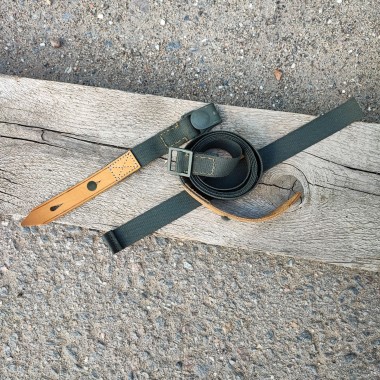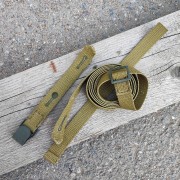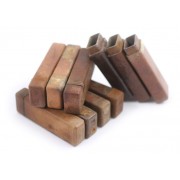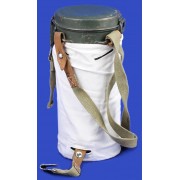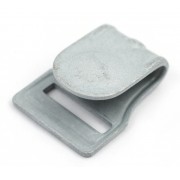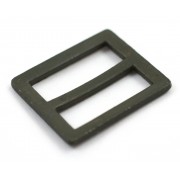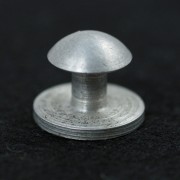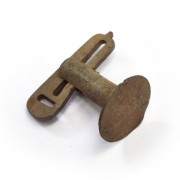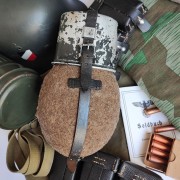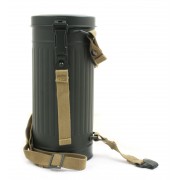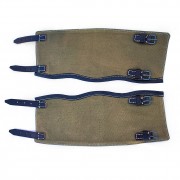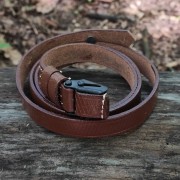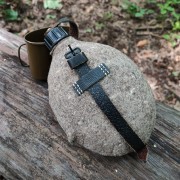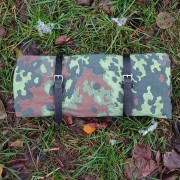How to choose the size?
There is a common misconception that straps must necessarily have leather tips and spacers, and that such straps are "early", and they must be worn with an uniform at the beginning of the war.
In practice, completely cloth straps (as here) were more common, and leather-reinforced ones were produced (judging by the preserved samples) from 1940 to 1942 as an option. Later (since 1944), the "reinforced" version was introduced with rubberized tips instead of leather ones.
Read the article at the link: (to be added).
There are a number of examples of the use of straps with gas mask boxes produced in different years. Spoiler: There is no uniformity.
The straps differed both in color and in the thickness and structure of the weaving of the sling. The only thing the Germans didn't have was straps made of thick (reinforced) slings, which are now used to make leashes for dogs. German straps were usually thin and light.
Description
The gas mask strap was used throughout the war on any type of German box.
Price per set for one gas box. The set consists of a long strap with a buckle and a peg, a short strap with a hook and a peg, and the smallest for sewing on the lock of the canister (without thread).
The straps are assembled by hand. We used a specially selected thin sling of the same cold green color as the Drillich work uniform made of herringbone fabric. The sling is woven from natural thread. Be careful, artisans can use a thick sling (dog leash) in khaki (yellow-brown shade) on cheap copies, which is fundamentally wrong.
The hooks are original aluminum, usually without stamps (produced during the war or after it, but on the same equipment), but branded ones can also be found. The buckles are also original. Pegs are a newly made of aluminum.
Historical reference.
There is a common misconception that straps must be with leather tips and spacers, and that such straps are "early" and must be worn with a suit at the beginning of the war.
In practice, fully cloth straps were more common (as here), and leather-reinforced ones were produced (judging by the surviving samples) from 1940 to 1942, as an option. Later (since 1944) the "reinforced" version met with rubberized tips instead of leather ones.
Read the article at the link.
There are a number of examples of the use of straps with gas mask boxes produced in different years. Spoiler: there is no uniformity.
The straps differed both in color and in the thickness and structure of the weaving of the sling. The only thing that the Germans did not have was straps made of thick (reinforced) slings, from which dog leashes are now made. German straps were usually thin and light.










